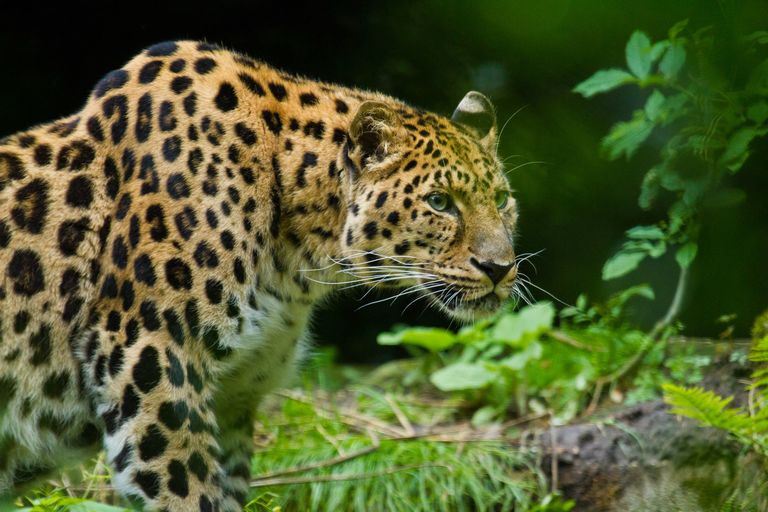
Introduction
Forests are among the most diverse ecosystems on the planet, home to a vast array of wildlife. They provide essential habitats for numerous animal species, offering food, shelter, and breeding grounds. The intricate relationships between the various animals that inhabit forests contribute to the overall health and balance of these ecosystems. This article will explore the different types of animals that live in forests, their roles within the ecosystem, and the challenges they face. We will also discuss the various layers of the forest and the unique adaptations of animals that allow them to thrive in these environments.
The Importance of Forests
Forests cover about 31% of the Earth’s land area and are vital for maintaining ecological balance. They play a crucial role in carbon sequestration, oxygen production, and water regulation. Forests also provide habitat for approximately 80% of terrestrial biodiversity, making them essential for the survival of countless species, including many that are yet to be discovered.
Ecological Benefits of Forests
- Biodiversity: Forests are home to a wide variety of species, including mammals, birds, reptiles, amphibians, insects, and plants. This biodiversity contributes to ecosystem stability and resilience.
- Climate Regulation: Forests help regulate the Earth’s climate by absorbing carbon dioxide and releasing oxygen. They also influence local weather patterns and help prevent soil erosion.
- Water Cycle: Forests play a critical role in the water cycle by absorbing rainfall and releasing water vapor into the atmosphere. They help maintain groundwater levels and reduce the risk of floods.
- Soil Protection: The root systems of trees anchor the soil, preventing erosion and maintaining soil fertility. Forests also contribute to nutrient cycling through the decomposition of organic matter.
- Habitat for Wildlife: Forests provide shelter and food for countless species, making them essential for wildlife conservation.
Layers of the Forest
Forests are structured in layers, each providing unique habitats for different species. The primary layers of a forest include:
- Forest Floor: The lowest layer, rich in decomposing leaves, organic matter, and nutrients. This layer is home to many small mammals, insects, and fungi.
- Understory: This layer consists of smaller trees and shrubs that thrive in the shade of the canopy. It is inhabited by birds, insects, and some larger mammals.
- Canopy: The upper layer formed by the tops of tall trees. The canopy is home to a diverse array of birds, mammals, and insects that rely on the abundant sunlight.
- Emergent Layer: The tallest trees that rise above the canopy. This layer is home to birds of prey and some insects.
Animals That Live in Forests
Mammals
Mammals are a diverse group of animals that inhabit forests. They range from small rodents to large herbivores and apex predators. Here are some notable forest-dwelling mammals:
- Deer: Species such as white-tailed deer and red deer are common in many forested areas. They are herbivores that feed on leaves, twigs, and grasses.
- Bears: Black bears and grizzly bears are often found in forested regions, where they forage for fruits, nuts, and small animals.
- Squirrels: Tree squirrels and ground squirrels are common in forests, where they feed on nuts, seeds, and fruits.
- Foxes: Red foxes and gray foxes are adaptable mammals that can thrive in forest environments, preying on small mammals and birds.
- Wolves: As apex predators, wolves play a crucial role in maintaining the balance of forest ecosystems by controlling herbivore populations.
Birds
Forests are home to a wide variety of bird species, each adapted to different layers of the forest. Some notable forest birds include:
- Woodpeckers: These birds are known for their drumming behavior and play a role in controlling insect populations.
- Owls: Nocturnal hunters that rely on the forest for shelter and hunting grounds.
- Songbirds: Many species of songbirds inhabit forests, using the trees for nesting and foraging.
- Hawks and Eagles: Birds of prey that hunt smaller mammals and birds in forested areas.
Reptiles and Amphibians
Reptiles and amphibians are also important members of forest ecosystems. They often serve as indicators of environmental health. Some examples include:
- Snakes: Various snake species, such as garter snakes and rat snakes, inhabit forests and help control rodent populations.
- Frogs and Toads: These amphibians are often found in moist areas of the forest and play a role in controlling insect populations.
- Lizards: Many lizard species thrive in forest environments, where they feed on insects and other small animals.
Insects
Insects are the most numerous animals in forests, playing critical roles in pollination, decomposition, and as a food source for other animals. Key insect groups include:
- Beetles: Many species of beetles inhabit forests, contributing to decomposition and nutrient cycling.
- Butterflies and Moths: These insects are important pollinators and serve as food for birds and other animals.
- Ants: Ants play a vital role in soil aeration and nutrient cycling and are often found in large colonies in forested areas.
Table of Animals That Live in Forests
| Animal Type | Examples | Habitat Layer |
|---|---|---|
| Mammals | Deer, Bears, Squirrels, Wolves | Forest Floor, Canopy |
| Birds | Woodpeckers, Owls, Hawks | Canopy, Emergent Layer |
| Reptiles | Snakes, Lizards | Forest Floor |
| Amphibians | Frogs, Toads | Forest Floor |
| Insects | Beetles, Butterflies, Ants | All Layers |
Adaptations of Forest Animals
Animals that inhabit forests have developed various adaptations that enable them to thrive in this complex environment:
- Camouflage: Many animals have coloration or patterns that help them blend into their surroundings, making it easier to avoid predators or ambush prey.
- Climbing Abilities: Species like squirrels and tree kangaroos have adaptations for climbing, allowing them to access food sources and evade ground-based predators.
- Nocturnal Behavior: Some animals, such as owls and certain rodents, are nocturnal, allowing them to avoid competition and predation during the day.
- Social Structures: Many forest animals, such as wolves and primates, live in social groups that enhance their ability to find food and protect against predators.
- Dietary Specialization: Animals in forests often have specialized diets that allow them to exploit specific food sources, such as nectar, fruits, or leaves.
Threats to Forest Animals
Despite their adaptations, forest animals face numerous threats that can impact their populations and habitats:
- Deforestation: The clearing of forests for agriculture, logging, and urban development leads to habitat loss and fragmentation, threatening the survival of many species.
- Climate Change: Changes in temperature and precipitation patterns can alter forest ecosystems, affecting the availability of food and suitable habitats for wildlife.
- Pollution: Chemical pollutants can contaminate soil and water, impacting the health of forest animals and their habitats.
- Invasive Species: Non-native species can disrupt local ecosystems, outcompeting native species for resources and altering food webs.
- Hunting and Poaching: Illegal hunting and poaching of forest animals can lead to population declines and disrupt ecological balance.
Conservation Efforts
Conservation efforts are essential to protect forest ecosystems and the animals that inhabit them. Some strategies include:
- Protected Areas: Establishing national parks and wildlife reserves helps safeguard critical habitats and provide refuge for endangered species.
- Sustainable Forestry: Implementing sustainable logging practices can help minimize habitat destruction while allowing for economic benefits.
- Restoration Projects: Reforestation and habitat restoration initiatives aim to rehabilitate degraded areas and restore biodiversity.
- Community Engagement: Involving local communities in conservation efforts fosters stewardship and promotes sustainable practices that benefit both people and wildlife.
- Research and Monitoring: Ongoing research and monitoring of forest ecosystems help identify threats and inform conservation strategies.
Conclusion
Forests are vital ecosystems that support a diverse array of animal life. From mammals and birds to reptiles and insects, the animals that inhabit forests play crucial roles in maintaining ecological balance. However, these animals face numerous threats that jeopardize their survival and the health of forest ecosystems. Understanding the complex relationships between forest animals and their habitats is essential for effective conservation efforts aimed at preserving these critical environments for future generations.
Frequently Asked Questions
- What types of animals live in forests?
Forests are home to a wide variety of animals, including mammals (like deer and bears), birds (like owls and woodpeckers), reptiles (like snakes and lizards), amphibians (like frogs and toads), and numerous insects. - How do animals adapt to forest environments?
Animals adapt to forest environments through camouflage, climbing abilities, nocturnal behavior, social structures, and dietary specialization. - What are the main threats to forest animals?
The main threats include deforestation, climate change, pollution, invasive species, and hunting or poaching. - Why are forests important for wildlife?
Forests provide essential habitats that offer food, shelter, and breeding grounds for a diverse range of species, contributing to overall biodiversity. - What conservation efforts are in place to protect forest animals?
Conservation efforts include establishing protected areas, implementing sustainable forestry practices, conducting restoration projects, engaging local communities, and ongoing research and monitoring.
References
“Forest.” Wikipedia. https://en.wikipedia.org/wiki/Forest


